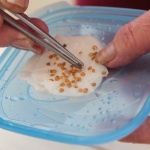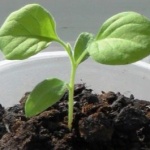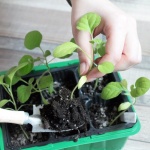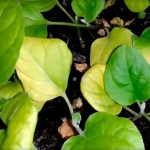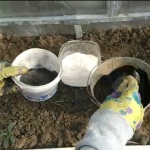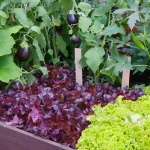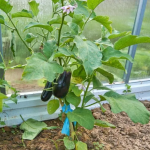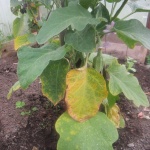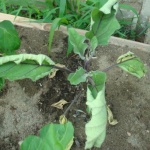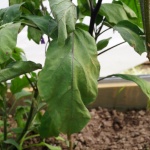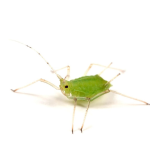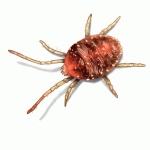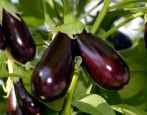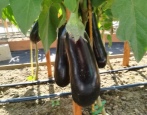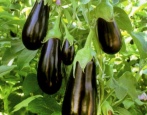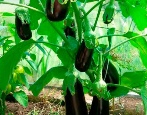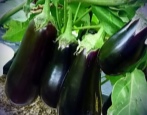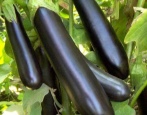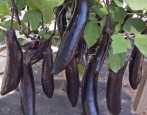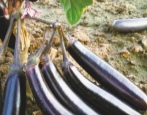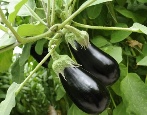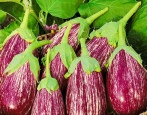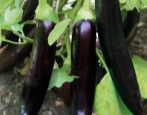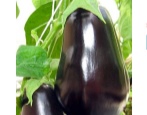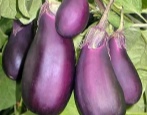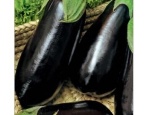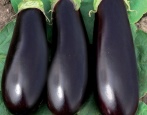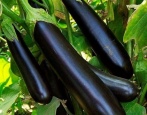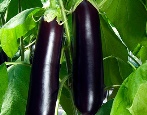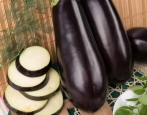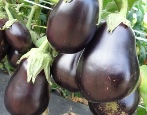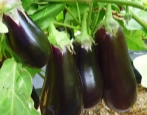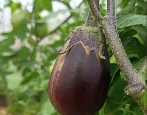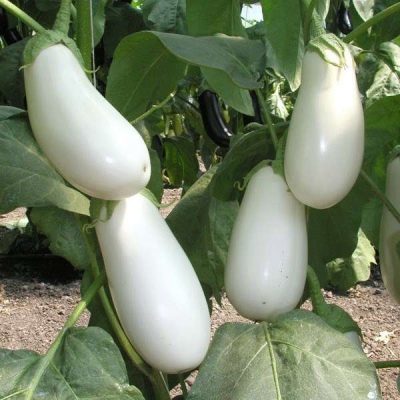
- Name synonyms: Bibo
- Year of approval: 2008
- Growth type: medium-sized
- Bush height, cm: 85
- Fruit size: large
- Fruit shape: oval
- Fruit weight, g: 190-210
- Yield: high yielding
- Fruit color: white
- Transportability: transportable
The relatively young Dutch variety Bibo is beginning to be in demand among many gardeners. Eggplant has a very unusual skin color, so summer residents are pleased not only with the yield of the variety, but also with its attractive appearance.
Breeding history
The culture belongs to hybrids and has another name - Bibo. The variety is produced by the Dutch breeding company Monsanto Holland B. V. The year of approval for use is 2008.
Description of the variety
Bibo eggplant can be grown both outdoors and in greenhouses. The variety has its own characteristic advantages, in particular early maturity. The culture has a fairly good immunity to a number of fungal diseases, as well as to changes in weather conditions. The bushes adapt well and take root on different soils. They do not shed the ovaries even in the presence of external stressors.
The culture bears fruit for a long time and stably. Due to the density of the peel, the crop can be stored in a dark and cool place for up to 1 month, as well as transported over long distances.
Of the minuses, expensive seed is noted. And since the variety is a hybrid, it is necessary to purchase seeds annually.
Bushes need a garter, as the fruits pull the branches down very strongly. It is worth considering that the variety has its own peculiarity - the stalk has small but tangible thorns. Thus, the bush protects its fruits from pests.
Characteristics of the appearance of plants and fruits
The bush grows up to 85 cm in length, which puts it in the category of medium-sized. The crown is semi-spreading. The stems are strong, but not very developed, their color is anthocyanin. Pubescence is rather weak. Leaves are medium in size, slightly pubescent. The edge has a slight waviness.
Vegetables ripen oval in shape, rather large in size. They reach 15 cm in length and 7 cm in diameter. Fruit weight - 190-210 g. The peel is dense, but very thin, low-gloss, white in color.
The pulp is firm, tender and juicy. It is light white in color with a slight admixture of green.
Purpose and taste
Eggplant does not contain solanine, which is responsible for the bitter taste. Gardeners note that the fruits do not taste bitter, even if they are eaten fresh. Therefore, some consider the variety to be dessert for its great taste. Bitterness in fruits can appear only if they are overexposed on the bush.
The vegetable contains a large amount of potassium, phosphorus and iron, which is why eggplant is so often eaten. It can be added to salads or hot meals. Bake, marinate, freeze and dry (thus preparing a light snack in the form of chips).
Ripening terms
Bibo eggplant is considered a very early variety. On average, it takes about 50-55 days from germination to harvest. In some regions, the number of days may increase to 63. Active harvesting occurs in August-September.
Yield
The Bibo variety is famous for its high yields. 4.8-5 kg can be removed from 1 m2. But these figures can vary based on weather conditions and planting density.
Growing regions
Producers do not have even rules on where to grow Bibo's eggplant. But if we proceed from the reviews of gardeners, the culture shows itself best of all in the following regions:
- Northern;
- East Siberian;
- Far Eastern;
- TsCHO;
- North Caucasian;
- Middle Volga;
- Ural;
- Nizhnevolzhsky.
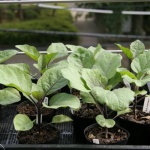
To get a tasty and bountiful eggplant crop, you must first grow strong and healthy seedlings.This culture is considered very capricious, therefore, you need to take care of seedlings when growing at home as correctly and carefully as possible.
Landing scheme
It is best to plant seedlings according to the 40x60 cm scheme, so that there are 4 to 6 bushes per 1 m2.
Growing and caring
Eggplant seeds germinate in the same way as seeds from other crops. But the main feature of this variety is that it is best to sow seeds in separate containers, since after a pick, the seedlings can get sick or feel uncomfortable.
The hybrid grows relatively quickly, so a container with a volume of 1.5 liters or more is suitable for it. The seeds are deepened by 1 cm into the soil treated with potassium permanganate. Each container is covered with foil and removed to a warm place for further germination. After that, the film can be removed.
So that the seedling does not actively grow, it is better to put it on the windowsill, closer to the sunlight.
Watering is carried out once every 3 days. And top dressing is done only twice before planting in the ground. To do this, you can use a complex of mineral fertilizers, which is diluted in warm water.
At the end of May, the seedlings are transplanted to the selected site. Further care of the crop will include feeding and watering.
- If no fertilizer was applied to the bottom of the hole during planting, then 10-14 days after planting it is necessary to feed the bushes with manure or urea. Subsequent feeding should include potassium, magnesium or potassium sulfate. In this case, you can use nitrogen, phosphorus.
- Watering is carried out as the soil dries out. It is necessary to ensure that the site is not too waterlogged. After irrigation, the soil should be loosened and all weeds removed.
Since the bushes grow actively, it is best to tie them to a support so that the stems do not break off under the weight of the fruit.
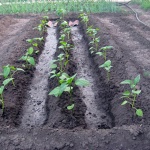
Planting eggplant is one of the most important stages in growing. When choosing a place for eggplants in your area, it is important to remember that this culture should be in warm soil, constantly illuminated by the sun. The plant is also very fond of spacious, open spaces, since its roots can grow over sufficient areas.
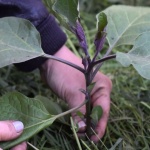
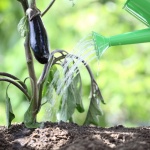
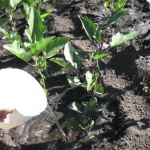
Disease and pest resistance
Young seedlings are very susceptible to attacks by insect pests. It can be both Colorado beetles and snails. Beetles show a very active interest in eggplant, so the vegetable should not be planted next to potato crops. Bushes must be inspected each time.
The bug is also characterized by frequent attacks. Although he does not manifest himself so actively, he is still harmful to the bushes.
It is recommended to spray the culture with the preparations "Agravertin", "Fitoverm", "Bitoxibacillin", "Aktofit". They are harmless to both humans and future fetuses. Among the folk methods, tincture of onion husks filled with boiling water is most often used.

Eggplant is one of the most demanding crops. For its successful cultivation, it is necessary to create optimal conditions, as well as to carry out prevention and fight against diseases and pests. Eggplant often infects both fungal and viral diseases. If treatment is not started on time, you can completely lose the crop.
